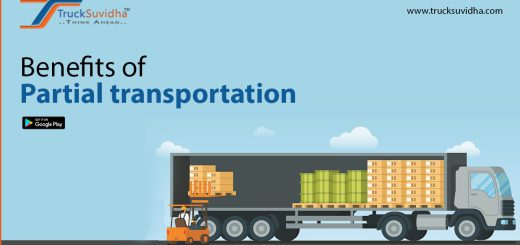What Sets a 3PL Provider Apart from a 4PL Provider?
You will probably come across the terms “3PL” and “4PL” while looking up fulfillment providers. It’s crucial to know the distinction between the two terms because, even though 3PLs are much more prevalent, they both refer to the outsourcing of fulfillment and e-commerce logistics services. Recognizing the key distinctions between a 3PL and a 4PL provider is crucial for identifying the logistics provider that best caters to your business requirements. With this in mind, this article intends to clarify these differences, helping you make a well-informed choice.
What is a 4PL Provider?
Third-party logistics (3PL) providers play some of the same roles as fourth-party logistics (4PL) providers, also known as lead logistics providers (LLPs), but they also have more accountability and responsibility in the process.
The management and delegation of the supply chain, including goods movement, order delivery, and 3PL supervision, exemplify this concept. Consequently, the roles and responsibilities within the supply chain become clearly defined and strategically organized.
In a 4PL network, 3PLs operate independently, employing distinct operational systems. Consequently, each 3PL establishes its unique procedures and standards for security and customer support.
The Benefits of Using a 4PL
- Providing a single interface for a variety of logistics and transportation services
- For all logistical and transportation-related operations, a single point of contact
- A thorough response to the demands of a complicated supply chain
Drawbacks of Working with a 4PL
- Giving up a substantial amount of control over logistics and transportation processes
- Potential biases that are not based on efficiency, performance, or results
- The transition will be difficult if the 4PL provider is removed.
- Added expenses
What is a 3PL Provider?
In layman’s terms, a 3PL will provide several logistical services to product firms that need to ship, store, and transport items, such as freight transportation, order fulfillment, and storage. In other words, a 3PL functions as a go-between for your company and the carriers who transport your items to clients. The majority of 3PLs run or operate their own facilities where the seller’s merchandise is stored and fulfilled.
The Benefits of Working with a 3PL
- Enhance transportation and logistics.
- Save money and gain strategic insights
- Enhance the customer experience by allowing for faster delivery.
- A more adaptable supply chain model
Drawbacks of Working with a 3PL
- Allow yourself to lose some internal control.
- Errors committed by the 3PL provider will be ascribed to your organization rather than the 3PL provider.
- Increasing reliance
What sets a 3PL apart from a 4PL?
E-commerce companies that outsource fulfillment to a 3PL collaborate closely with their partner, who oversees the entire process. To save time and resources associated with operating a warehouse and managing inventory, packaging, and shipping, e-commerce firms strategically outsource these tasks to a single, specialized 3PL partner. In contrast to a 3PL, a 4PL provides another layer of separation between the merchant and the 3PL by managing the partnership with the 3PL.
Here are a few key differences between a 3PL and a 4PL.
Order completion
A 3PL focuses on order fulfillment, encompassing warehousing, order picking, packaging, and shipment. In contrast, a 4PL goes above and beyond, managing the entire supply chain, including fulfillment, transportation, and technology.
A merchant collaborates directly with a 4PL provider; consequently, they address supply chain challenges and coordinate with other vendors.
Optimization of the supply chain
Conversely, collaborating with a 3PL empowers merchants to interact directly with the service provider, thereby fostering a partnership to develop strategies that optimize fulfillment. This direct communication ultimately enhances the merchant’s experience, leading to tailored solutions and improved satisfaction.
Because a 3PL uses a warehouse management system (WMS) to handle all fulfillment center locations within its network, merchants have access to data and analytics, ranging from demand forecasting tools to shipping statistics, which allows them to make better decisions.
The single-source-of-truth dashboard allows real-time tracking and visibility of inventory levels.
Customer communication
The 4PL acts as the primary point of contact for the merchant, directly routing all communication to the various 3PLs. This might cause delays in addressing difficulties because the 4PL acts as a mediator throughout this process rather than the merchant dealing directly with the 3PL.
Consequently, this type of customer service lacks ownership at the 3PL level, causing frustration for merchants.
With a 3PL partner, you have access to the same customer service staff (and, in some circumstances, a specialized account manager). This allows you to interact with a staff who understands your account and quickly handles difficulties.
Also Read:- 5G in Innovative IoT and Analytics Solutions for Logistics
Conclusion
If you own a small to medium-sized firm, 3PL services are a better alternative for you. They will assist you in managing your storage and distribution so that you can concentrate on marketing and sales as your company expands. However, if your medium to large-sized organization requires a broader variety of services, a 4PL supplier will be more appropriate.




Recent Comments